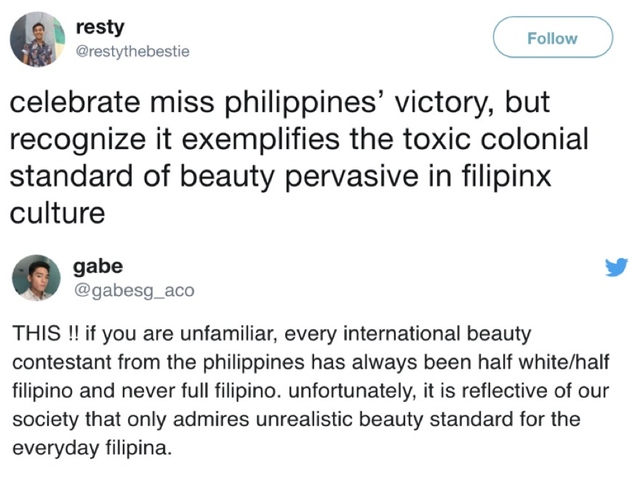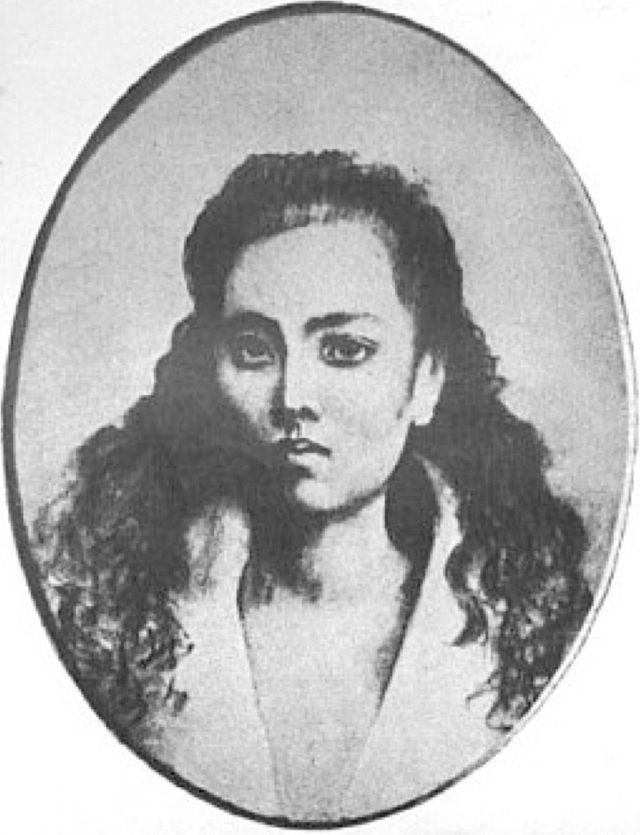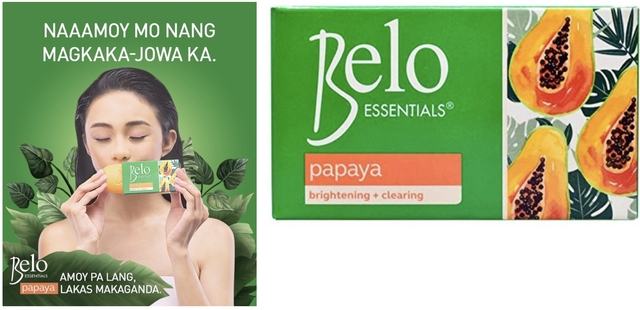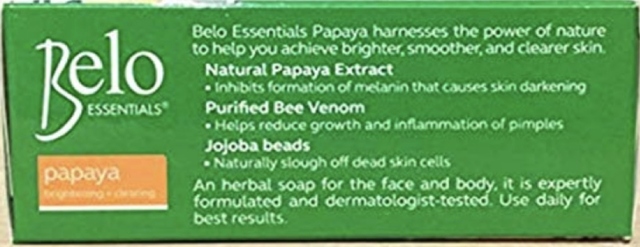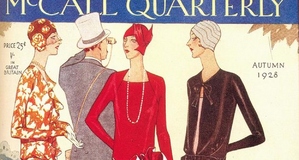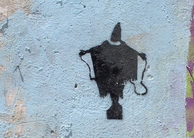Flipping the Cultural Script: Papaya Soap and Skin Color Stratification in the Philippines
By
2020, Vol. 12 No. 10 | pg. 1/1
IN THIS ARTICLE
KEYWORDS
AbstractCenturies of subjugation under Spanish and American colonial rule have embedded an idealistic view of white beauty in the minds of Filipinos. It continues to be deeply rooted in Philippine culture due to the constant exposure of Filipina bodies to the advertisements of the massive skin lightening industry. Papaya soap, one of the many objects produced by the industry, has perpetuated social stratification in the Philippines. In the following critique, I explore the origins of papaya soap while using a feminist consumerist lens to reveal how it has been marketed to promote a colonial mindset of “white” beauty under the guise of female Filipina empowerment. Furthermore, I reveal the ways in which this product has provided the means for the neocolonial imposition of biopower over Filipinos and set up a framework to flip the cultural script on valuing white skin to decolonizing and de-victimizing this perception of white beauty. IntroductionAs a young five-year-old walking to and from school, I always wondered why my mother would be so adamant to shade me from the sun. I recall that she would carry a large black umbrella and hold it high above my head to block the sun’s rays as we paced the sidewalks of Panorama City. I remember feeling both embarrassed and confused - none of the other mothers walked their children to school with such conspicuous umbrellas. “Why do you bring an umbrella when you walk, Mommy?” I remember asking her in Tagalog. I share my anecdote above to exemplify how the act of commodifying white, fair skinruns deep for many Filipinos; it pervades even in everyday conversation to reinforce colonial standards of beauty. There is an ingrained belief that individuals who have a light complexion embodies the ideal citizen. They are automatically endowed with symbolic capital in the Philippines, as light skin is often conflated with beauty, power, and high social status (Rondilla, 2009, p. 64-65). This is evident by the Philippines’ obsession with maputi (light-skinned) actors and actresses that grace Filipino television screens and films. It is very rare that darker-skinned Filipinos are represented in popular media, as Filipino society tends to worship public figures that fit the colonial standards of beauty. For example, the recently crowned Miss Universe 2018, Catriona Magnayon Gray, is a representative of the Philippines. After her coronation, many Filipinos throughout the world celebrated her victory, while others criticized her for not being “Filipino enough,” citing her half-Filipino, half-Australian ethnicity. Many Filipinos took to Twitter to express their frustration over the Philippines’ obsession with Westernized values of beauty (Fig. 1). Figure 1. Criticisms of Miss Philippines Catriona Gray victory after the Miss Universe pageant in December 2018 Both tweets express concern over a Filipino society that values and upholds an unrealistic, “toxic colonial standard of beauty” of Filipinos, and especially of Filipina women (Fig. 1). This mindset has long been embedded in Filipino culture since the Philippines was subjugated for many centuries under colonial control of the Spanish, Chinese, and Americans. In the present day, the skin-lightening industry preys on this obsession by producing and selling products that are marketed towards Filipinos who are insecure about their tanned and darker complexions. Magazines and commercials are ridden with advertisements for skin-lightening lotions and creams. One of these widely-accessible products is papaya soap. At 79 pesos, which is approximately $1.52 in the United States, papaya soap offers a cheap alternative to many skin-lightening creams and procedures that could otherwise cost Filipinos thousands of pesos (Perez, 2018). Furthermore, one could easily buy this product at their local drugstore, thus eliminating the need to make a trip to the dermatologist’s clinic. The wide accessibility of papaya soap reinforces and perpetuates social stratification in the Philippines and extends even beyond its national borders to include places of the Philippine diaspora, such as the United States. The common belief is that individuals of lighter skin are more likely to be blessed with opportunities and greater successes in life (Glenn, 2009; Hunter, 2007). If papaya soap gives you the means to achieve such social capital, why not seize at the opportunity? Cheap and readily available, papaya soap has effectively forced darker-skinned individuals to comply or to be pushed to the margins. My research interest in this topic aims to reflect upon the broader themes of exposure to papaya soap and to centuries of colonial influence on idealistic views of beauty within the Filipino community. In the following critique, I will trace the history of how idealistic white beauty came to be in the Philippines and examine the prevalence of papaya soap as a result of these deeply-rooted perspectives. In addition, I will be using a feminist consumerist lens to closely critique magazine and video advertisements to reveal how papaya soap has since been marketed to promote a colonial mindset of “white” beauty under the guise of female Filipina empowerment. Through an object analysis of papaya soap, I plan to reveal how this product has contributed to social stratification and provided the means for colonial rule to impose biopower upon Filipinos. In revealing these complex interactions, I see my work as an extension of a current movement to decolonize this prevalent view of white, mestiza beauty. Tracing the Roots of Colonial Beauty and the Emergence of ColorismSkin-lightening procedures and products such as papaya soap are deeply embedded in the colonial history of the Philippines. In order to understand the context in which these products emerged, I will begin this critique with a historical analysis of the society and culture that shaped the early concepts of colonial beauty and consequent colorism. When Ferdinand Magellan “discovered” the islands of the Philippines on his voyage in 1521, the country was subjugated to 300 years of Spanish colonial control. As Spaniards began to settle throughout the Philippines, racial intermixing between Spanish ilustrados (colonial masters and wealthy landowners) and indios (indigenous Filipinos) became commonplace (Rondilla and Spickard, 2007, p. 54). This ethnic admixture produced half-European, half-Filipino progeny that became known as mestizos. Despite this intermixing on the biological level, deep social inequities between the Spanish and the native Filipinos began to form. Upper-class landowners tended to be of European descent and of lighter skin, which demoted darker-skinned indigenous peoples to the lower rungs of the social hierarchy. According to popular media outlet Filipiknow, “more than three centuries of colonization had given Spaniards enough time to inculcate in our ancestors that they’re second-class citizens in their own country” (Batongbakal, 2019). Figure 2. Crayon sketch of Leonor Rivera, who was idealized for Jose Rizal’s character of Maria Clara in Noli Me Tángere The subjugation of indigenous Filipinos is reflected in the literature produced during the Spanish period. In the 1887 novel Noli Me Tángere, Filipino author José Rizal describes the female love interest María Clara’s skin as having “the whiteness of cotton, according to her enthusiastic relatives” (Rizal, 2006). Although a work of fiction, Noli Me Tángere reflects the values of a culture where whiteness is conflated with beauty, and beauty inspires a female’s desirability in a patriarchal society. As we will see in a later section of this critique, these ideas persist in the form of advertisements for papaya soap. Social stratification based on an individual’s skin color, also known as colorism, further intensified during the American occupation of the Philippines from 1898 to 1946. For the purposes of this critique, I will be operating on Margaret Hunter’s definition of colorism, which is “the process of discrimination that privileges light-skinned people of color over their dark-skinned counterparts” (Hunter, 2007, p. 237). Hunter further distinguishes colorism from other forms of discrimination in that it is inherently tied to an individual’s biology, as opposed to more socially constructed identities such as an individual’s race. With the Philippines under American colonial rule, we see U.S. administrators and soldiers preferentially choosing mestiza concubines over darker-skinned Filipinas, thereby marking this intensified preference for a physical feature that is rooted in one’s biology (Rondilla and Spickard, 2007). Consequently, colorism was and continues to be “predicated on the notion that dark skin represents savagery, irrationality, ugliness, and inferiority” (Hunter, 2007, p. 238). In the present day, the skin lightening industry continues to capitalize on these oppressive standards, which we will see with the popular advertisements that market papaya soap as an agent for skin lightening. Feminist ConsumerismThe historical origins of colorism and skin color stratification in the Philippines began with Spanish colonization and intensified during American neocolonialism in the early 20th century. In turn, it influenced the production of papaya soap as a skin-lightening agent among Filipinos. Papaya soap has since become a staple in the Filipino skin care regime, and Filipina women are constantly bombarded by advertisements that seem to portray a sense of female empowerment. Moving forward, I will conduct a visual, cultural analysis of papaya soap using a theoretical lens of feminist consumerism. Josée Johnston and Judith Taylor coined the term “feminist consumerism” in a 2008 critique of the Dove Real Beauty Campaign, where they use the theory so as
In essence, the concept of “feminist consumerism” is entrenched in a consumer culture, where products are marketed towards a female demographic that places emphasis on their sense of agency and empowerment in making commodified purchases (Johnston & Taylor, 2008, p. 944). Thereby, the female can be made to feel confident in buying something for herself that will contribute to her personal happiness and her perception of beauty. Visual Analysis of Papaya Soap AdvertisementsFigure 3. Belo Essentials papaya soap. Belo Essentials (2018) advertisement for papaya soap featuring Filipina model Maymay Entrata and a closer look at the Belo Essentials papaya soap packaging, special focus on “brightening and clearing.” We could apply the theoretical lens of feminist consumerism to the 2018 advertisement for Belo Essentials papaya soap, which is just one of countless ads that Filipinas are constantly bombarded with (Fig. 3a). It features a conspicuously fair-skinned Filipina model, Maymay Entrata, as she holds the soap up to her nose. With eyes closed, she appears to be smelling the product with serene contentment. Roughly translated, above her reads ‘You can smell that you’ll have a boyfriend soon’, and below her reads ‘Just from the scent already, you will radiate immense beauty’ (Fig. 3a). These messages appear to communicate to the consumer that using the product will attract love to its user and that it will empower its users to feel and smell beautiful, thus aligning with the feminist consumerism definition that such a consumer product aims to “seek personal pleasure and social approval” (Johnston & Taylor, 2008, p. 944). A 2013 video ad for another popular papaya soap brand, Palmolive, features famous Filipina-Australian actress Anne Curtis. In the video, she sings:
Both Belo Essentials and Palmolive advertise in a way that aims to empower women to feel beautiful in their own skin, going so far as to say that whiteness can make you feel like a goddess, thus equating the divine with white beauty. Thereby, this promotes light skin “as a form of social capital, one that is especially critical for women because of the connection between skin tone and attractiveness and desirability” (Glenn, 2008, p. 281). Furthermore, the Palmolive marketing team intentionally chose Anne Curtis as their ideal image to market the “after” of a before-and-after sequence in using their product. Choosing a mestiza4 actress as the image for Palmolive reinforces the Eurocentric ideals of white beauty embedded three centuries ago - to communicate that any skin color other than white is not beautiful, not divine, and not worthy of love and affection. According to Rondilla and Spickard (2007), “the myth of Whites as superior has turned Whiteness into an investment that has a particular cash value,” one that can be sold, bought, and consumed in the form of a body soap. Essentially, papaya soap and other skin-lightening products have perpetuated skin color stratification within women themselves, a concept known as “beauty queue” theorized by Margaret Hunter (2005):
Collectively, these popular ads highlight a society that values whiteness as a commodity, and they effectively force female to comply to the idealistic white beauty or to be pushed to the margins. Papaya Soap through the Lens of BiopowerFilipinas are constantly exposed to papaya soap and other skin-lightening products through visual media such as advertisements and TV commercials. Such media may be viewed through a lens of feminist consumerism; but, as I analyze above, valuing light skin is deeply rooted in the colonial history of the Philippines and contributes to skin color stratification. This is very much reminiscent of a social theory that French scholar Michel Foucault coined: biopower, which is the practice of institutionalized powers to regulate and control their subjects via “an explosion of numerous and diverse techniques for achieving the subjugation of bodies and the control of populations” (Foucault, 1976; Adams, 2017). This new theoretical lens can be applied to papaya soap. As with all skin-lightening products, papaya soap interferes “with the body’s natural function, one of which is to produce melanin” (Rondilla & Spickard, 2008, p. 79-80). This is particularly emphasized on the Belo Essentials papaya soap packaging, where they highlight thepower of natural papaya extract to inhibit “formation of melanin that causes skin darkening” (Belo Essentials papaya soap, Fig. 5). According to scientific literature, melanin is suggested to have photoprotective role against UV radiation and is theorized to “serve as a physical barrier that scatters UVR, and as an absorbent filter that reduces the penetration of UV through the epidermis” (Brenner and Hearing, 2008, p. 541; Kaidbey, Agin, Sayre, and Kligman, 1979). Using skin-lightening products that inhibit the natural body’s ability to produce melanin effectively prevents the body from protecting itself from the sun’s harmful UV rays. This is especially problematic for a person who lives in the Philippines, where there is abundant sunshine all year long. In essence, papaya soap is a product of colonial thought that began three centuries ago. By partaking in the practice of skin lightening, Filipinos are willingly exposing themselves to harm, all at the risk for achieving Eurocentric features. Another component of biopower is its “‘indispensable element in the development of capitalism’, which made possible ‘the controlled insertion of bodies into the machinery of production and the adjustment of the phenomena of population to economic processes’” (Foucault, 1976, p. 140; Adams 2017). Biopower is therefore inherently tied to capitalism and consumerism, where a significant demand for skin-lightening products such as papaya soap is met with increased manufacturing and supply of the products. It represents a positive feedback loop where the rise in demand necessitates a rise in supply, thus becoming an ongoing and potentially never-ending process. Unfortunately, this immense biopower continues to exist in a postcolonial landscape of the Philippines and its peoples. Rondilla and Spickard (2008) conducted an interview that reflects this colonial legacy, where a twenty-year-old Filipino shared:
Ultimately, papaya soap and other skin-lightening agents have operated as a form of biopower that has roots in Spanish and American colonialism. These products have contributed to skin color stratification in the Philippines and continue to exist to this day. ConclusionMy mom was always adamant to carry a large black umbrella when she accompanied me to school. I knew it was to prevent my skin from tanning but, at a young age, I didn’t understand the deeper social context that underlie her desire to maintain a fair complexion. Papaya soap and other skin-lightening agents have been marketed to empower Filipinas to look and feel beautiful while having a white skin, essentially forcing those who are darker-skinned to comply or to be pushed aside in favor of white beauty. These ideals are strongly present in Filipino culture due to the constant exposure of bodies to advertisements of papaya soap and the greater skin-lightening industry. On the surface, the printed and video advertisements seem to promote feminist ideals, but beneath the messages are deeply-rooted colonial sentiments that promote whiteness as a superior physical quality. As a result, papaya soap can be seen as a form of biopower meant to quite literally get under the skin and impose the subjugation of docile and willing bodies. This interpretation illustrates darker-skinned Filipinas as victims of colonial mentality. However, in moving forward, I suggest that it is important more than ever to flip this cultural script to be more color-inclusive in a political climate that aims to decolonize long-standing beliefs of white beauty and white supremacy. We have acknowledged our loaded and troubled past, but it is now time to ditch the papaya soap. Let’s grow past the mindset that “if you’re lighter, you’re better” and adopt the mantra that “if you’re lighter, it doesn’t matter.” ReferencesAdams, R. (2017). Michel Foucault: Biopolitics and Biopower. Critical Legal Thinking - Law and the Political. Retrieved from http://criticallegalthinking.com/2017/05/10/michel-foucault-biopolitics-biopower/ Batongbakal, L.E. (2019, February). A Brief History Of Filipinos’ Obsession With White Skin. Filipiknow. Retrieved from https://filipiknow.net/filipino-obsession-white-skin/ Belo Essentials. (2018). Papaya Soap Advertisement. Retrieved from http://www.starmometer.com/2018/06/18/watch-maymay-entratas-funny-soap-commercial/ Brenner, M. and Hearing, V.J. (2008). The protective role of melanin against UV damage in human skin. Photochemistry and Photobiology, 84, 539-549. Foucault, M. (1976). The History of Sexuality, Éditions Gallimard. Glenn, E.N. (2008). Transnational Circuits in the Marketing and Consumption of Skin Lighteners. Gender & Society, 22(3), 281-302. Glenn, E.N. (2009). Consuming Lightness: Segmented Markets and Global Capital in the Skin Whitening Trade. In Evelyn N. Glenn (Ed.), Shades of Difference: Why Skin Color Matters (pp. 166–187), Stanford, CA: Stanford University Press. Hunter, M.L. (2005). Race, Gender, and the Politics of Skin Tone. New York, NY: Taylor & Francis Group, LLC. Hunter, M.L. (2007). The Persistent Problem of Colorism: Skin Tone, Status, and Inequality. Sociology Compass, 1(1), 237–254. Johnston, J. and Taylor, J. (2008). Feminist Consumerism and Fat Activists: A Comparative Study of Grassroots Activism and the Dove Real Beauty Campaign. Signs: Journal of Women in Culture and Society, 33(4), 941–966. Kaidbey, K.H., Agin, P.P, Sayre R.M., and Kligman, A.M. (1979). Photoprotection by melanin—A comparison of black and Caucasian skin. Journal of the American Academy of Dermatology, 1, 249–260. Palmolive Naturals Philippines. (2013, July 21). Palmolive Naturals White + Papaya Soap TV Commercial. [Youtube video]. Palmolive Naturals PH. Retrieved from https://www.youtube.com/watch?v=pFTKC3LQrh8 Perez, M.G. (2018, May). Likas Papaya Whitening Soap Review. Vanity Room Philippines. Retrieved from https://www.vanityroomph.com/2018/05/likas-papaya-whitening-soap-review.html Rizal, J. (2006). Noli Me Tangere (Touch Me Not). (Translation Ed.). London, England; Penguin Classics. Rondilla, J.L. (2009). Filipinos and the Color Complex: Ideal Asian Beauty. In Evelyn Nakano Glenn (Ed.), Shades of Difference: Why Skin Color Matters, (pp. 63–80). Stanford, CA. Stanford University Press. Rondilla, J.L. and Spickard, P.R. (2007). Is Lighter Better?: Skin-Tone Discrimination among Asian Americans. Lanham, MD. Rowman & Littlefield Publishers. Endnotes1.) Anak translates to “child,” usually a term of endearment used by a mother towards son or daughter 2.) Pag umitim ka translates to “If you get dark,” pertaining to dark-skinned 3.) Para sa puting dyosa roughly translates to “For a white goddess” 4.) Mestizo/mestiza refers to Filipinos of mixed heritage, typically half-European and half-Filipino. Suggested Reading from Inquiries Journal
Inquiries Journal provides undergraduate and graduate students around the world a platform for the wide dissemination of academic work over a range of core disciplines. Representing the work of students from hundreds of institutions around the globe, Inquiries Journal's large database of academic articles is completely free. Learn more | Blog | Submit Latest in Women's & Gender Studies |

